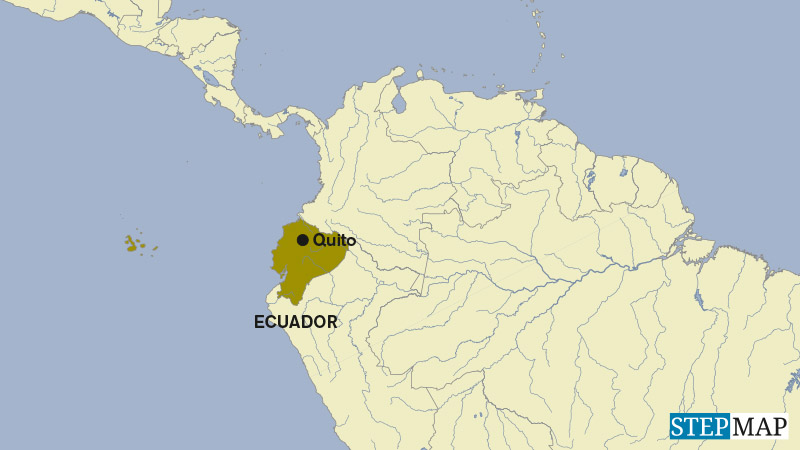Climate
Risk assessment at many levels
[ By Jan Peter Schemmel and Michael Scholze ]
As negative impacts of climate change will above all affect developing countries, adaptation measures are gaining in significance. The challenge cannot be met by merely initiating a set of additional projects, since global warming is threatening the success of many projects already underway or in advanced planning stages.
Two studies have shown the extent of the risks. The World Bank (2006: 120) estimated that 25 % of its projects are exposed to serious climate risks. In a survey of six countries, the OECD (2005: 16) argued that global warming may negatively affect between 12 % (Tanzania) and 65 % (Nepal) of all official development assistance (ODA).
Nepal is a good example of the challenges’ dimensions. It is anticipated that glacial retreat and changes in precipitation will have a high impact. Shortages of energy supply from hydroelectric facilities, damage to infrastructure and poor harvests in agriculture are to be expected.
Consequently, development policy in general must become geared towards adaptation to climate change. It is vital to prevent foreseeable damages, as well as to make optimal use of any opportunities that may arise. The ministers in charge of development and of environmental affairs of the OECD have already expressed their intention to act accordingly (2006: 7). In a similar vein, the European Union (2004: 6f) and Germany’s Development Ministry (BMZ, 2007: 3) have emphasised the relevance of systematically assessing climate risks.
The obvious starting point is: how will the climate change? Science offers around 20 different models to predict the global climate. The results of these models are consistent. However, humankind itself is the main factor of uncertainty. How many people will emit what quantity of greenhouse-gas emissions in the year 2050? Will only eight billion people inhabit the earth – or as many as eleven billion? Will their energy consumption be approximately the same as the present-day level of industrialised countries, or will it stay considerably lower?
Because of such uncertainties, research does not provide perfectly exact data. The Intergovernmental Panel on Climate Change (IPCC) forecasts that – depending on emission levels – the average global temperature will rise between 1.9 and 4.0 degrees Celsius in the course of this century.
Clearly, global predictions are of relatively little use for specific projects. However, science is providing increasingly more precise regional data, which means susceptibility analyses are also becoming more accurate. To get yet more reliable and useful data, it is imperative to boost research in developing countries and to increase coordination between scientists and development agencies.
Need for action
While some residual uncertainty will always remain, the trends and dimensions of climate change are known. That is also true of the social consequences. In view of the tremendous damages to be expected, it would be irresponsible not to act appropriately and timely. This, of course, concerns all planning of donor agencies. Their partners in the developing world, however, are in even greater need of solid information in order to make adequate decisions. On behalf of the German Development Ministry, GTZ will advise India’s environment ministry on climate-proofing procedures for large-scale rural investment programmes, and is involved in other related programmes as well.
In principle, all development programmes and projects in regions and sectors affected by global warming must be made climate-proof. Obviously, the consequences will be more substantial in fields like agriculture or coast maintenance than in that of judicial reform. In any case, the instruments used will have to be easy-to-handle. Non-experts must be put in a position to understand climate risks. Therefore, existing information must be put into a user-friendly format. It is essential to strike the right balance between credibility and simplicity.
In the medium term, standardised instruments – “climate-proofing tools” in the international jargon – could become important. Several donor agencies are working on such tools, not least because they intend to check their own portfolios. They are sharing experiences in the context of an OECD working group. Most tools, however, are still in the pilot phases. Relevant proposals were discussed at the “Linking Climate Adaptation Network” workshop in Geneva in April.
Climate-risk maps could be an especially promising tool. For every project area, such maps indicate the aggregated climate risks, making it easier to plan and make decisions. Wherever major risks become apparent, they should be analysed in more detail in a second step, with the likely result of project designs being modified. It would certainly make sense if climate-risk maps also indicated other risks (earthquakes, volcano eruptions, tsunamis et cetera) to make assessments more effective and avoid duplication of efforts.
The next step would be about assessing vulnerabilities more precisely. Not every extreme climate event, after all, results in a disaster. Only people who lack the knowledge, funds and facilities to prepare for storms, floods and the like are helpless at the mercy of nature’s forces. A simple example illustrates that not everyone is vulnerable to climate change to the same extent: The rise of the sea level will be the same in the Netherlands and in Bangladesh; but while the Dutch have the means to protect themselves, Bengalis do not.
Once the likely vulnerabilities in a given region are understood, it makes sense to consider adaptive measures. For instance, it may be advisable to switch to more drought-resistant plants in agriculture. In any case, infrastructures must be designed in a way to cope with anticipated change. In certain instances, adaptation may imply no longer supporting certain measures. It would be useless, for example, to invest in hydropower plants in areas where rivers are likely to run dry in the future.
Other mainstreaming experience tells us that guidelines of a merely formal nature normally have little effect. It is essential to work with easy-to-follow instructions and easy-to-use instruments. Moreover, neither donors nor recipients should content themselves with adaptation measures. There still is time to limit the phenomenon of global warming. Besides analysing climate risks, all partners involved should therefore also look out for chances to reduce emissions, and implement programmes accordingly.










